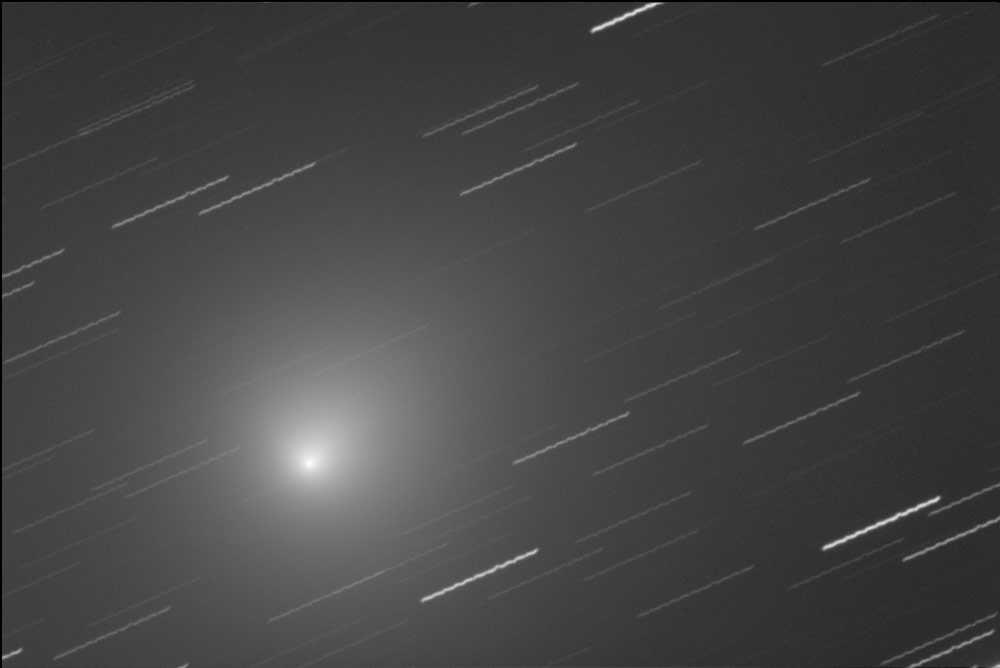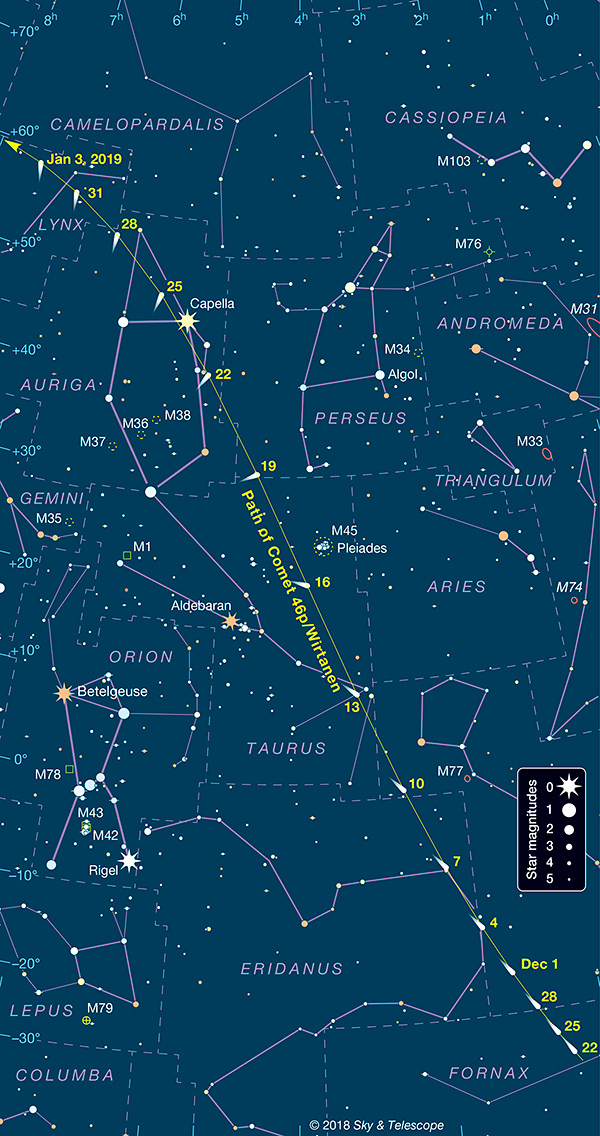A Gift from the Cosmos: Watch Comet 46P/Wirtanen's Holiday Visit Live Online
A comet is visiting Earth for the holidays!
On Wednesday (Dec. 12), skygazing enthusiasts can look up or tune into a special webcast to watch as Comet 46P/Wirtanen makes its closest approach to the sun, called perihelion. The live feed here is provided by the Virtual Telescope Project, and will begin at 5 p.m. EST (2200 GMT). You can also watch it live on Space.com, courtesy of the Virtual Telescope Project.
The comet will bring more season's greetings. Just four days later, on Dec. 16, a second webcast will show the comet's closest approach to Earth, when it will pass an estimated 7,199,427 miles (11,586,350 kilometers) away from our planet. This makes it the 20th closest approach by a comet over the last 12 centuries. [Comet 46P/Wirtanen: How to See It & What to Expect]

Today's comet webcast is one of two by the Virtual Telescope Project (the other airs Dec. 16, also at 5 p.m. EST), because, according to the project's director astrophysicist Gianluca Masi, this is when the comet will be close to its maximum brightness.
"We will observe comet Wirtanen thanks to our robotic telescopes," Masi wrote in the event details. He adds that this event aspires to make it "possible for everyone to spot this cosmic snowball!"

Comet 46P/Wirtanen is named after astronomer Carl Wirtanen, who first observed it in 1948. The comet is a member of the Jupiter "family" of comets, with an orbit that goes out as far as Jupiter's path around the sun. It currently takes 5.4 Earth years to travel once around our star.
The comet will be visible to the naked eye under very dark skies, as well — although binoculars or a telescope will allow a better view.
Get the Space.com Newsletter
Breaking space news, the latest updates on rocket launches, skywatching events and more!
Follow Doris Elin Salazar on Twitter@salazar_elin. Follow us @Spacedotcom, Facebook and Google+. Original article on Space.com.
Join our Space Forums to keep talking space on the latest missions, night sky and more! And if you have a news tip, correction or comment, let us know at: community@space.com.

Doris is a science journalist and Space.com contributor. She received a B.A. in Sociology and Communications at Fordham University in New York City. Her first work was published in collaboration with London Mining Network, where her love of science writing was born. Her passion for astronomy started as a kid when she helped her sister build a model solar system in the Bronx. She got her first shot at astronomy writing as a Space.com editorial intern and continues to write about all things cosmic for the website. Doris has also written about microscopic plant life for Scientific American’s website and about whale calls for their print magazine. She has also written about ancient humans for Inverse, with stories ranging from how to recreate Pompeii’s cuisine to how to map the Polynesian expansion through genomics. She currently shares her home with two rabbits. Follow her on twitter at @salazar_elin.









